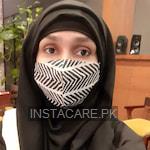Hives - Symptoms, Risk factors and Treatment
Last Updated On Tuesday, December 16, 2025
Hives in Urdu
چھتے، جسے چھپاکی کے نام سے بھی جانا جاتا ہے ایک ایسی حالت ہے جس میں آپ کی جلد پر سرخ، کھجلی، ابھرے ہوئے دھبے نمودار ہوتے ہیں جو الرجین کی وجہ سے ہوتے ہیں- ایک مادہ جو الرجی، ڈنک اور چوٹ کا سبب بنتا ہے۔ اسے welts، nettle rash، یا weals کے نام سے بھی جانا جاتا ہے۔ الرجی کے رد عمل کے دوران، الرجین جسم میں داخل ہوتا ہے، جسے جسم ایک غیر ملکی ذرہ سمجھتا ہے اور آپ کے خلیے ہسٹامین نامی پروٹین تیار کرتے ہیں۔ آخر کار، ہسٹامین الرجک رد عمل کو متحرک کرتا ہے اور کیپلیریوں سے سیال خارج ہونے کا سبب بنتا ہے۔ خارج ہونے والا سیال جلد میں جمع ہو جاتا ہے جس کے نتیجے میں خارش ہو جاتی ہے۔
چھتے تقریباً 20% لوگوں میں ان کی زندگی کے دوران ہوتے ہیں۔ یہ متعدی نہیں ہے- یعنی یہ ایک شخص سے دوسرے شخص میں نہیں پھیلتا ہے۔ چھپاکی کسی بھی قسم کے الرجین کی وجہ سے ہو سکتی ہے اور یہ شخص سے دوسرے شخص میں مختلف ہوتی ہے۔ کچھ کے لیے یہ مونگ پھلی ہو سکتی ہے، جب کہ کچھ کے لیے یہ وہ لباس ہو سکتا ہے جو وہ پہن رہے ہیں۔ بعض اوقات وہیل ظاہر ہو سکتے ہیں اور خود ہی چلے جاتے ہیں، جبکہ زیادہ تر انہیں علاج کی ضرورت پڑ سکتی ہے۔ اگر علاج نہ کیا جائے تو چھپاکی جان لیوا بن سکتی ہے۔
Hives in English
Hives, also known as urticaria is a condition in which red, itchy, raised bumps appear over your skin that occurs due to allergen- a substance that causes the allergy, sting and hurt. It is also known as welts, nettle rash, or weals. During an allergy reaction, the allergen enters the body, which the body considers as a foreign particle and your cells produce a protein called histamine. Eventually, histamine triggers an allergic reaction and causes the capillaries to leak fluid. The leaked fluid accumulates in the skin eventually causing rashes.
Hives occur in approximately 20% of people sometime during their lifetime. It is not contagious- means it does not spread from person to person. Urticaria can occur due to any kind of allergen and it varies from person to person. For some, it can be a peanut, while for some it can be clothing they are wearing. Sometimes the wheals may appear and go away on their own, whereas mostly they may need treatment. If left untreated, urticaria can become life-threatening.
Symptoms
The sign and symptoms of hives are;
Red swollen skin with itch and discomfort. The shape may be round or oval but it is elevated as a bump. They can appear anywhere on the body, mostly on the face, arms, chest and fingers, hands, legs, and toes. The size may range from few millimeters to several inches.
Risk factors
Hives are triggered by certain triggers, also known as allergens- substances that cause allergy. It can be substances like;
- Taking medications with whom your body is allergic. It can be anyone like antibiotics including vancomycin, cefepime, amoxicillin, or non-steroidal anti-inflammatory drugs (NSAIDs) including aspirin or ACE inhibitors- drugs used to treat high blood pressure
- Eating foods like nuts, shellfish, food additives, eggs, strawberries, and wheat products
- Having concurrent infections like influenza, the common cold, glandular fever, and hepatitis B
- Having bacterial infections like urinary tract infections and strep throat
- Having intestinal parasites
- Exposure to extreme temperatures or changes in temperature
- Raised body temperature
- Exposure to pet dander from dogs, cats, horses, and others
- Getting exposed to dust mites
- Living in a place where there are plenty of cockroaches and cockroach waste
- Exposure to latex, pollen, some plants, including nettles, poison ivy, and poison oak
- Exposure to insect bites and stings
- Exposure to some chemicals
- Having a chronic illness, such as thyroid disease or lupus
- Getting exposed to sunlight
- Water residing on the skin
- Scratching your skin for a long time
Treatment
The general treatment for urticaria is giving antihistamines- drugs that block the action of histamine- a substance that causes allergy. During an allergy reaction, the allergen enters the body, which the body considers as a foreign particle and your cells produce a protein called histamine. Eventually, histamine triggers an allergic reaction and causes the capillaries to leak fluid. The leaked fluid accumulates in the skin eventually causing rashes.
Other tips to prevent hives are;
Know the triggers that exacerbate your allergy and hives. To get an insight into it, maintain a diary. Write everything you eat in it and what kind of fabric you are wearing and everywhere you are going. It will help in knowing about the trigger.
- Wear loose clothing through which air can pass.
- Avoid your exposure to pollen-rich areas and outdoors when pollens are there.
- Avoid the medications with whom you are allergic and sensitive.
Conclusion
Hives occur in approximately 20% of people sometime during their lifetime. It is not contagious- means it does not spread from person to person. Urticaria can occur due to any kind of allergen and it varies from person to person. During an allergy reaction, the allergen enters the body, which the body considers as a foreign particle and your cells produce a protein called histamine. Eventually, histamine triggers an allergic reaction and causes the capillaries to leak fluid. The leaked fluid accumulates in the skin eventually causing rashes. If left untreated, urticaria can become life-threatening.
Frequently Asked Questions
Hives is a skin reaction that causes itchy welts to appear on the skin. It is also known as urticaria, and it can be caused by an allergic reaction to something, a drug or food, certain infections, or emotional stress. The welts can vary in size and usually go away on their own, but in some cases, the condition can become chronic and last for months or even years.
hives is called چھپاکی in Urdu.
Hives can be caused by an allergic reaction to something, such as a food, medication, or insect bite. Other possible causes include physical contact with something, such as pressure, cold, heat, or sun exposure, as well as emotional stress, infections, and certain medical conditions. In some cases, the cause of hives may not be known.







